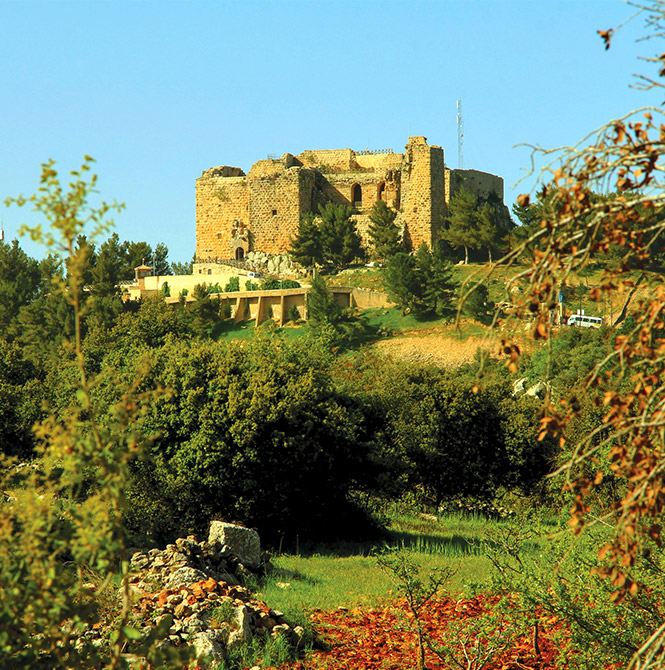
Historians believe that the name of the city of Ajloun goes back to Ajloun, king of Moab. The mountains of Ajloun were also mentioned in the Bible, which are the mountains of Gilead, and the forests of Ajloun, which are the forests of Ephraim, were mentioned. Today, Ajloun is home to a number of archaeological sites such as Qalaat al-Rabad, as well as religious sites such as the shrine of the Prophet Elijah (Mar Elias), and the shrine of the Virgin, Our Lady of the Mountain in Anjara.

Some historians believe that the name of the city of Ajloun goes back to "Ajloun", king of Moab, who was mentioned in the Book of Judges from the Bible. King Ajloun captured Jericho and struck and enslaved Israel: “Then the sons of Israel did evil again in the sight of the Lord, and the Lord strengthened Ajloun, king of Moab, over Israel, because they had done evil in the sight of the Lord. And the sons of Israel enslaved Ajlou, king of Moab, for eighteen years" (Judges 3:12-14(.
As for the history of Ajloun, it is more ancient than the Book of Judges, and from Ajloun, the king of Moab. What was found here and there of pottery and other pieces indicates that Ajloun was inhabited in the first Bronze Age (1900-1550 BC), and that it was of great importance since ancient times due to its geographical and commercial location.
The mountains of Ajloun are the mountains of Gilead mentioned in the Bible, and its forests are the forest of Ephraim. In the Middle Ages, Mount Ajloun was known as the Bani Awf Mountain, and the Bani Auf tribe lived in the mountain and spread in the Jordan Valley and was known for its ferocity.
In the early fifties, some mosaics were found in one of the houses near the Latin Church, and in the market were found walls of old houses and arches, in addition to pottery vessels from the Roman and Byzantine eras.
One of the columns that the Romans used to place next to the roads and write on them the distance of the road between one city and another was also found. Finally, a stone with a picture of a palm date was found, dating back to the medieval Arab era. Roman wells and caves abound in Ajloun and its environs, which were used as cemeteries and places of worship for Christians during the persecution era in the first generations.